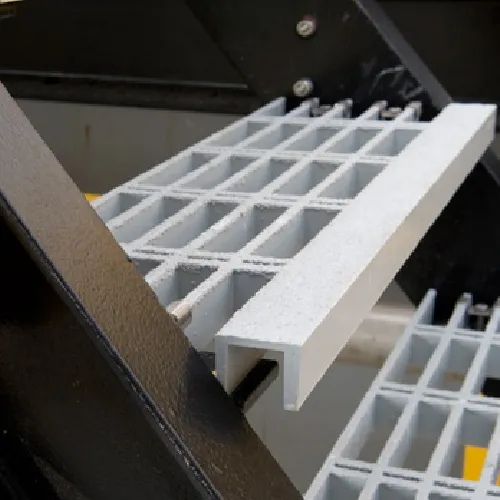loading...
- No. 9, Xingyuan South Street, Dongwaihuan Road, Zaoqiang County, Hengshui, Hebei, China
- admin@zjcomposites.com
- +86 15097380338
- Welcome to visit our website!
Trends and Factors Influencing FRP Rebar Pricing in Construction Industry
The Economics of FRP Rebar Understanding Pricing Trends
In recent years, the construction industry has witnessed a growing trend towards the adoption of Fiber Reinforced Polymer (FRP) rebar as an alternative to traditional steel reinforcement bars. The unique properties of FRP rebar, including its lightweight nature, high corrosion resistance, and overall durability, make it particularly attractive for a variety of applications, from bridges and tunnels to residential buildings and infrastructure projects. However, one crucial aspect that influences the widespread adoption of FRP rebar is its pricing. This article delves into the factors affecting FRP rebar prices and highlights the implications for the construction industry.
Understanding FRP Rebar
Before exploring pricing trends, it's important to understand what FRP rebar is and its benefits. FRP rebar is made from a composite material that includes a polymer matrix reinforced by fibers, typically glass, carbon, or aramid. Unlike traditional steel rebar, which is prone to rust and corrosion, FRP rebar is non-corrosive and can withstand harsh environmental conditions, making it ideal for use in marine environments, chemical plants, and infrastructure exposed to deicing salts.
Factors Influencing FRP Rebar Prices
1. Raw Material Costs The price of FRP rebar is significantly influenced by the costs of its raw materials. As the demand for high-quality fibers and polymer resins increases, fluctuations in these raw material prices can directly impact the overall production cost of FRP rebar. For instance, rising petrochemical prices can lead to higher costs for resin materials, affecting the final price of FRP products.
2. Manufacturing Processes The production of FRP rebars involves specialized techniques and technologies that can drive up manufacturing costs. The complexities of ensuring the right fiber alignment and achieving high-strength properties require advanced machinery and skilled labor, contributing to the overall price of these materials.
3. Market Demand and Supply Just like any other commodity, the price of FRP rebar is subject to the principles of supply and demand. An increase in construction activity, particularly in sectors like infrastructure and public transportation, can lead to a spike in demand for FRP rebar, consequently raising its price. Conversely, when construction slows down, prices may stabilize or decline.
frp rebar price

4. Competition with Traditional Materials Although FRP rebar offers numerous advantages, its higher initial cost compared to steel has often been a barrier to entry in many markets. However, with the increasing recognition of long-term cost savings due to reduced maintenance and extended service life, more projects are incorporating FRP rebar. This competition has led to price adjustments as manufacturers strive to make FRP a more viable alternative.
5. Technological Advancements Innovations in manufacturing processes and materials can lead to decreased production costs over time, which may translate to lower prices for FRP rebar. Research into more efficient production techniques and the development of new composite materials could make the use of FRP rebar more economically feasible for a broader range of applications.
Implications for the Construction Industry
The pricing of FRP rebar has profound implications for construction professionals and project stakeholders. While the initial investment for FRP rebar is higher than that for traditional steel, the long-term benefits, including lower maintenance costs and enhanced durability, often justify the upfront costs. Project designers and engineers are increasingly considering the life-cycle cost of materials rather than just initial prices when making material selections.
Moreover, as technology advances, the price differential between FRP rebar and traditional materials may diminish, potentially leading to wider adoption in construction projects. Additionally, as governments and regulatory bodies continue to push for sustainable building practices and the use of resilient materials in infrastructure, FRP rebar could gain further momentum, establishing itself as a cornerstone of modern construction paradigms.
Conclusion
In conclusion, the price dynamics of FRP rebar are shaped by a multitude of factors, including raw material costs, manufacturing processes, market demand, and technological advancements. While current prices may pose challenges for widespread adoption, the long-term benefits and ongoing innovations in this realm indicate a positive outlook for FRP rebar in construction. As the industry evolves, understanding these pricing trends will be crucial for stakeholders looking to leverage the advantages of this innovative material.
-
Transform Your Spaces with FRP Grating SolutionsNewsNov.04,2024
-
The Versatility and Strength of FRP RodsNewsNov.04,2024
-
The Excellence of Fiberglass Water TanksNewsNov.04,2024
-
The Benefits of FRP Grating for Your ProjectsNewsNov.04,2024
-
Elevate Your Efficiency with FRP Pressure VesselsNewsNov.04,2024
-
Welcome to the World of FRP Pressure VesselsNewsOct.12,2024
-
Unveiling the Future of Filtration: Why FRP Filter Vessels are a Game ChangerNewsOct.12,2024
